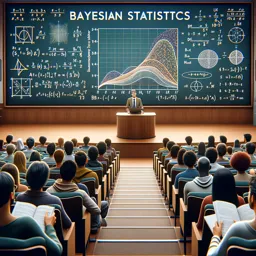What Are Statistical Models?
Statistical models are mathematical frameworks that allow statisticians and scientists to represent, analyze, and interpret data. These models play a critical role in applied statistics as they facilitate making inferences about the world around us using real-world data.
Types of Statistical Models
There are various types of statistical models commonly used in applied statistics, including:
- Linear Models: These involve relationships where changes in the predictors have a constant effect on the response variable. Linear regression is a well-known example.
- Generalized Linear Models (GLMs): While similar to linear models, GLMs allow for response variables that have error distribution models other than a normal distribution, such as logistic or Poisson regression.
- Random Effects Models: These models handle data where observations are grouped, like repeated measures on study subjects, helping to account for variability both within and between groups.
- Nonlinear Models: These capture more complex relationships that cannot be adequately described by a straight line, such as growth curves in biology or dose-response curves in pharmacology.
Building a Statistical Model
Constructing a statistical model typically involves several steps:
- Defining the Problem: Clearly articulate what you want to understand or predict.
- Data Collection: Gather relevant data from experiments, surveys, or observations.
- Data Preparation: Clean and preprocess data to eliminate errors, handle missing values, and prepare it for analysis.
- Model Specification: Choose an appropriate model based on the problem and data characteristics.
- Model Fitting: Use statistical software to estimate the model parameters.
- Diagnostics and Validation: Check the model’s assumptions, assess goodness-of-fit, and validate predictions using hold-out data or cross-validation.
- Interpretation: Relate the results back to the original problem and make data-driven decisions or predictions.
Why Statistical Models Matter in Applied Statistics
Statistical models are foundational in fields ranging from economics and engineering to medicine and environmental science. By allowing for the analysis of complex datasets and the modeling of uncertainty, they support informed decision-making and guide practical solutions in diverse applications.
Common Challenges
Building effective models requires careful attention to assumptions, potential bias, data limitations, and overfitting. Applied statisticians must balance complexity and interpretability to ensure that models not only fit the data well but also generalize to new situations.
Conclusion
Understanding and using statistical models is a cornerstone of applied statistics. Whether predicting trends, evaluating interventions, or testing scientific hypotheses, these models provide robust tools for translating data into knowledge and action.

























